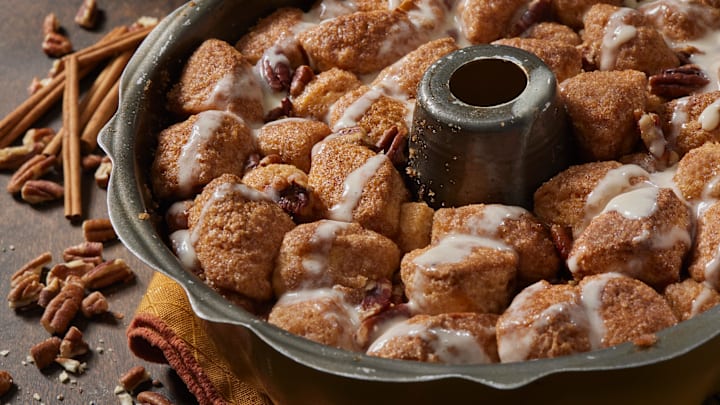Monkey bread—a sticky pull-apart pastry that’s typically made from canned biscuit dough—is a sugary, cinnamony treat. Perhaps it’s a traditional part of your family’s Christmas feasts. Or maybe grandma was known for whipping it up for special brunches.
Despite its seemingly silly name, monkey bread has nothing to do with actual monkeys. So why is this sweet pastry named after primates? Let’s dig into the history of monkey bread, starting from the very beginning.
Monkey Bread’s Hungarian Roots
Before it became a centerpiece on Americans’ tables, this dish was known as something else entirely. Food historians trace its roots to aranygaluska, a Hungarian dessert that translates to “golden dumpling.” This pull-apart sweet bread was brought to the U.S. by Hungarian Jewish immigrants in the late 19th century.
Aranygaluska was a bakery staple in immigrant communities, especially in California, for several decades. In the 1970s, Betty Crocker even featured it in a cookbook; the book labeled the sweet dish as “Hungarian Coffee Cake.”
Eventually, the dish became known as “monkey bread”—a name that has stuck around to this day. And thanks to actress and first lady Nancy Reagan (a big fan of the treat), monkey bread made it to the White House Christmas table, cementing its status as a classic. The pastry has continued to evolve; now, there are seemingly countless recipes floating around the internet for traditional monkey bread, other sweet versions, and even savory spins on the dish.
The Many Theories Behind Monkey Bread’s Name
There’s no clear answer as to how monkey bread got its name. But, like most good mysteries, there are several theories at play.
The most common explanation is that it’s named after the way it’s eaten: with your fingers, pulling apart the sticky pieces of dough one by one, much like a monkey might eat something.
Some also trace it back to 20th-century slang. In the 1940s, monkey food was Southern slang for casual snacks you could pick at. That, combined with jumble bread—another old-timey term for breads made from small pieces of dough—could have led to monkey bread.
Another theory credits silent film star ZaSu Pitts, who reportedly used the term in a 1945 cooking column after bringing the recipe home from Nashville. Pitts was known for her lavish Hollywood parties; and apparently, her monkey bread was a hit.
In the end, monkey bread might just be one of those names that stuck, literally and figuratively. Like the dessert itself, it’s a little weird and oddly delightful.
Read More About Food:
